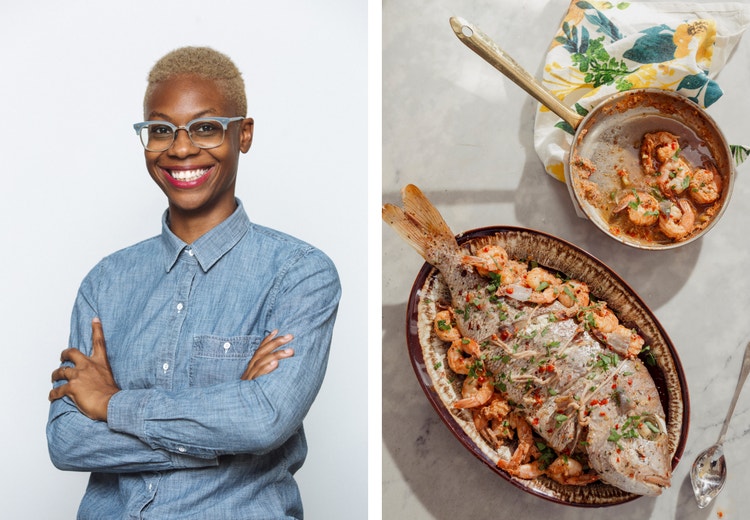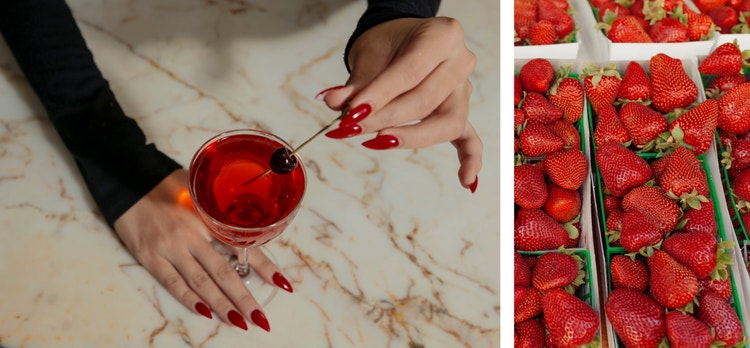Celebrating the flavors of Juneteenth

Image credit: Adobe Stock / Oriana Koren.
The Juneteenth federal holiday in the U.S. is a time for not only celebration, but a reflection on our nation’s history, what we’ve learned, and the challenges that remain. Officially recognized as a federal holiday beginning in 2021 to commemorate the abolition of slavery, it’s a unique occasion for artists and creators to explore its meaning, express themselves, and share their perspectives with others.
Adobe’s purpose is to enable creativity for all, and the Juneteenth commemoration opens up a wide range of opportunities for individuals to authentically depict their lives and experiences. For example, we have been excited to partner with Adobe Stock artist and Artist Development Fund recipient O Koren, a nonbinary “photo ethnographer” whose work most often focuses on Black contributions to American foodways and popular culture.

Image credits (from left): Portrait of the artist, courtesy Oriana Koren, Adobe Stock / Oriana Koren.
A unique approach to exploring hard truths
A founding member of the Authority Collective, co-author of the Photo Bill of Rights, and the founder of the Lit List photo award, Koren’s work reflects their unique heritage and deep historical awareness.
“I work a little differently from your typical editorial commercial photographer, and I like to explore unexplored, underreported niches,” says Koren. “I set out to document the contributions that African descendants have made to American cuisine and food I really wanted people to be aware of, and to have a better understanding of what this country has gained through its former practice of chattel slavery. Half of my lineage is from the Mississippi Delta; the other half of is from Haiti, so I grew up with a first-generation immigrant experience, while having a family with deep roots in the United States.”
Koren was inspired by the book, High on the Hog, by Dr. Jessica Harris, the foremost black food historian in the U.S. The book revealed that the wealth of our country was built not just by cheap and easy labor taken from Africans, but specifically because of their agricultural knowledge, technologies, and skills.
“One thing I learned from High on the Hog that I thought was really brilliant was the importance of black women in the kitchen during chattel slavery and as domestic workers after reconstruction,” says Koren. “Black women at the time could only get employed as house cleaners or cooks, but they learned things like French banquet cooking in order to be able to meet the demands of the people who had enslaved them.”

Image credits (from left): Adobe Stock / Oriana Koren, Adobe Stock / Oriana Koren.
O Koren’s work is a feast for the senses, and one of its most striking qualities is the heavy use of the color red, such as the woman with the long red nails holding the red cocktail. This is in perfect keeping with the Juneteenth holiday, which often includes red signature dishes such as red velvet cake and hibiscus drinks. The distinctive palette is both symbolic and purposeful.
“There are kind of a lot of different interpretations of why red is specifically a color of food that's consumed during Juneteenth,” says Koren. “What I found in my research over and over again is that red in West African traditions signifies spiritual power and transformation. While the enslaved Africans were not able to practice their religion, speak their languages, and maintain their cultures as they did on the continent, they still had the memory of those things, which they used to keep those traditions and that culture alive. For some, it is also reminder of the blood that was shed to attain freedom for themselves and their descendants. It's not surprising to me to see that red comes up specifically for a liberation celebration.”

Image credits (from left): Adobe Stock / Oriana Koren, Adobe Stock / Oriana Koren.
Informing imagery with respect and context
As Koren’s work has shown, the Juneteenth holiday can open new dialogues about our nation’s history and the Black American experience. At their best, images and photographs can inspire deep reflection and powerful emotions. However, concepts that are poorly thought out and executed can also lead to a backlash — especially if audiences find the images crass and commercial.
“We need more awareness...but brands are jumping on Juneteenth just because they see the opportunity,” Corean Canty, chief operating officer at We Are Rosie, a marketing and networking organization, told Marketing Brew.
Naturally, illustrators and photographers will want to create commercially appealing, compelling images of Juneteenth celebrations, Southern food, feasts, and festivities. But it’s also up to creators to present these images in a respectful way that’s mindful of the full context of the holiday.
“We’ve seen a lot of pandering to the Black community,” says Koren. “On the one hand, I think it's great that there's general knowledge of this celebration of the liberation of formerly enslaved African people. But I also think that it needs to be a holiday that does not get commodified, because it is a very sacred holiday, marking the liberation of a group of people who are still systemically oppressed in our society.”
Adobe Stock regularly shares education, calls for stock content, and best practices for content creation for stock imagery. One recommendation we often come back to is for artists to ask themselves if they’re the right person to actually tell the story. If you aren’t sure about depicting something with full understanding of context, you may wish to pick a different story where you have specific expertise or lived experience. At the very least, you may wish to partner with crew or models who are from the community you’re seeking to depict. Working with models, crew, designers, or cultural consultants who have direct expertise can help you create with greater accuracy, integrity, and potential impact.
Koren believes that experience and education are key to creating more realistic, accurate, culturally sensitive, nuanced depictions.
“I have two pieces of advice,” says Koren. “First, brands need to think seriously about deferring these jobs to the people who are experts at Juneteenth. Reach out to Black creators in Texas who have generationally been celebrating Juneteenth and have a more specific memory about its meaning to the community. I would also ask [brands and artists] to do their research. I understand that the imagery that I'm putting out in the world affects peoples’ perceptions and how they interact with other people in the world. There has been a lot of revising of history, especially as it regards to chattel slavery and the African American experience, so humble yourself and know that there's a lot to learn.”
Koren understands that an artist’s perspective can be revealed in every aspect of an image, so a thoughtful focus on details is key.
“One of the things that I observed really early on entering the food industry as a photographer was, whenever I saw hands in pictures of food, I never saw brown hands,” says Koren. “It was really important to me to include lots of black and brown hands in these images of them making and sharing food, gardening, and farming, showing that this human element can also come from people of color. Interacting with food was important because I know those images can be used in myriad ways. And they don't have to be specific to Juneteenth.”
Explore O. Koren’s portfolio on Adobe Stock. Feeling inspired? Explore the Taste of Heritage creative brief from the Adobe Stock Advocates program and submit your own images and videos capturing rich cultural and culinary narratives.